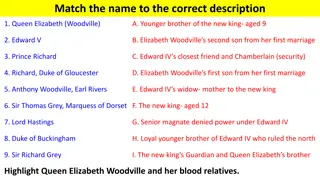
Practical Byzantine Agreement in Distributed Systems: Exploring Protocols and Adversarial Scenarios
Delve into the dynamics of achieving Byzantine agreement in distributed systems through protocol design, adversarial scenarios, and the use of randomized algorithms. Understand the challenges posed by untrusted players and the importance of public ledgers and digital currencies.
Download Presentation

Please find below an Image/Link to download the presentation.
The content on the website is provided AS IS for your information and personal use only. It may not be sold, licensed, or shared on other websites without obtaining consent from the author. If you encounter any issues during the download, it is possible that the publisher has removed the file from their server.
You are allowed to download the files provided on this website for personal or commercial use, subject to the condition that they are used lawfully. All files are the property of their respective owners.
The content on the website is provided AS IS for your information and personal use only. It may not be sold, licensed, or shared on other websites without obtaining consent from the author.
E N D
Presentation Transcript
Towards Practical Byzantine agreement Valerie King University of Victoria
0 0 1 1 1 1978: BA models worst case faults in procs which communicate via point-to-point links and worst case delays in message delivery ID of sender is known?
Today: untrusted players possibly controlled by single adversary, need for public ledger, digital currency
Strong adversary 0 0 1 1 1 Sets inputs
Strong adversary 0 0 1 1 1 Sets inputs Arbitrarily delays messages
Strong adversary 0 0 1 1 1 Sets inputs Arbitrarily delays messages Controls t bad procs NO DETERMINISTIC ALG (FLP)
Randomized algorithms: Each proc can flip a private coin
Randomized algorithms more choices for model 1980 s Private channels or crypto assumptions O(1) expected time Feldman and Micali 1988 Full information States of all procs known to adversary
Randomized models Private channels or crypto assumptions O(1) expected time Full information States of all procs known to adversary BAD Procs chosen at start (Static)* *Easier, elect leader or small group Bad procs chosen dynamically
1983 Ben-Ors alg t<n/5 vp=input bit of proc p While not decided proc p does: 1. Broadcast vp , wait til n-t procs respond, 2. v majority bit if received from >(n+t)/2 proc (else nil) 3. send out (echo, v ), wait til n-t procs respond 4. Case analysis:
Every proc in Case A&B or every proc in Case B&C CASE: #(echo,v), v nil A) > (n-t)/2+t decide v All decide by next round All decide same value by next round If all coinflips agree and they agrees with v ( good B) > t then vp v C) else vp private coinflip direction )
Essentials of Ben-Or Repeat until decision Broadcast CASE: # (echo,v) messages: > (n+t)/2 then decide v >t then vp v else vp private coinflip sometimes produces a collective coin Decision if collective coin agrees with v
We can modify Ben-Or: Repeat until decision Broadcast CASE: # (echo,v) messages: > (n+t)/2 then decide v >t then vp v else vp private coinflip a (sometimes) collective coin alg. Decision if collective coin agrees with v
Observe 1: can be iterated if collective coin is not agreed on or not fair. Observe 2: Solves t n problem: W/const prob, variance of coinflips > 2t Adv can t affect majority value 1/2 prob. of fair coin
Study of coinflipping-1980s Byzantine Agreemt Asynchronous Exp time with message passing (Ben Or, Bracha) Collective Coinflipping Problem (idealized version) One time atomic broadcast-- (Linial, Kalai,Ben-Or, Alon, Dodis, Zuckerman, Feige, Saks, ) Toward multistage asynch version .
Multiround Collective Coin flipping Collective coin problem Output F=f1, f2, p1 p2 . f1
Add asynchronicity At each round, F must be robust to up to t (good) coins missing.
Generalize Ben-Ors A Cast (1-sync) (in Maurices talk): m-sync: p1 p2 . 1 2 m n-t columns complete, known to all procs The last coin in up to t columns is ambiguous
Generalize Ben-Ors A Cast (1-sync) (in Maurices talk): m-sync: p1 p2 . 1 f=1 iff #head ># tails 2 m n-t columns complete, known to all procs The last coin in up to t columns is ambiguous
In asynch model with <n/2 crash faults: p1 p2 . 1 2 n ~n2 coins variance ~n > # ambiguous coins. W/constant prob Ambiguous coins don t affect output. consensus in O(1) n-syncs= O(n) expected time (Aspnes)
BYZANTINE multistage asynch Collective Coin problem Design F: Adversary Basic step is n-sync to determine coin
BYZANTINE multistage asynch Collective Coin problem Design F: Dynamic adversary can take over nt >>var Adversary Basic step is n-sync to determine coin
How many rounds are needed until a fair coin is generated? F=f1, f2, Adversary f1 f2, f2 n-sync
We show: (n1.5) rounds of n-syncs suffice (n2.5) expected time But we do not know polytime computable F (STOC 2013 w Jared Saia) O(n2 ) rounds where F is ptime computable O(n3 ) expected time for Byzantine agreement. (SODA 2014 with Jared Saia)
Constructing a polynomial time F
How to design F? Key Idea: Either majority yields a fair coin sometimes orBad procs have a suspicicous pattern of Biased coinflips over time because fewer bad procs must nearly match the variance in the bad direction
F=(f1,f2,) Each proc p keeps badness score badp(j) for each proc Let |Vp |=|V|, initially For round i, If bad(j,k) T remove j from Vp fi=majority of coins in n-sync from procs in Vp
F=(f1,f2,)* Each proc p keeps badness score badp(j,k) for each proc pair measuring their cumulative covariance. Let |Vp |=|V|, initially For round i, Correction step: to discover ambiguous coinflips from previous rounds If bad(j,k) T remove j,k from Vp fi=majority of coins in n-sync from procs in Vp *New Version, work in progress by Nick Benson, UVic undergrad (Changes in GREEN)
Bensons new result Computationally simpler, replaces computation of SingularValueDecomposition of an n x n matrix Constant overhead additional communication for correction Brings resilience down to ~n/30 from ~n/(6 billion) for the O(n3 ) time algorithm.
Randomized lower bounds Full information States of all procs known to adversary Symmetric Las Vegas algs with constant # prob choices require 2 (n) A. Lewko (DISC 2011) Consensus requires (n) Aspnes, Attiya, Censor-Hillel BAD Procs chosen at start (Static) Bad procs chosen dynamically
Further Discussion Gap of n2 or n1.5 from consensus lower bound Sequential computational problem in n2.5 round alg dense planted clique problem Amount of communication and space Relevance to today s problems?
Thank you (and thanks to Gary Larsen) Questions?
Sometimes-collective coinflipping find planted clique Every m n-syncs is an epoch e Find a set of t suspect columns S Proc Rounds BAD BIAS > B in each |heads-tails| for x S |S| t

![[PDF⚡READ❤ONLINE] Tutankhamun's Trumpet: Ancient Egypt in 100 Objects from the](/thumb/20549/pdf-read-online-tutankhamun-s-trumpet-ancient-egypt-in-100-objects-from-the.jpg)
![READ [PDF] Fallen King (Moon Lake Protectors)](/thumb/42281/read-pdf-fallen-king-moon-lake-protectors.jpg)


















